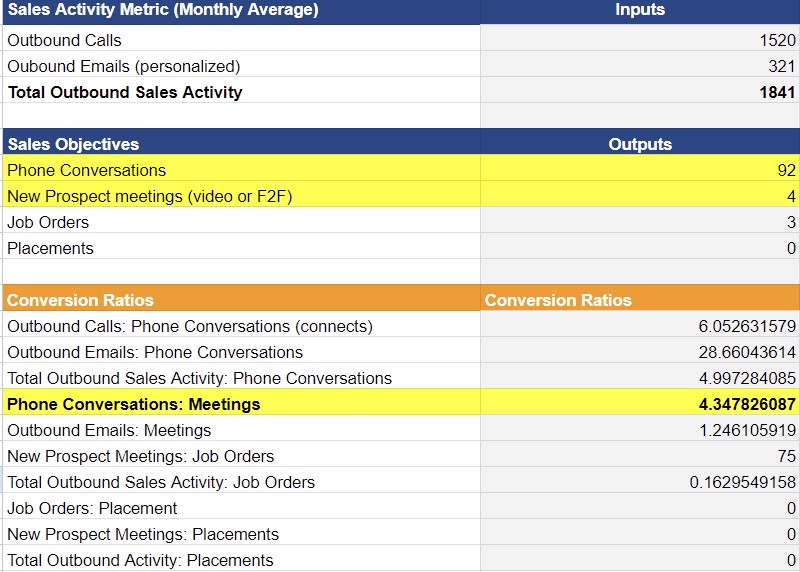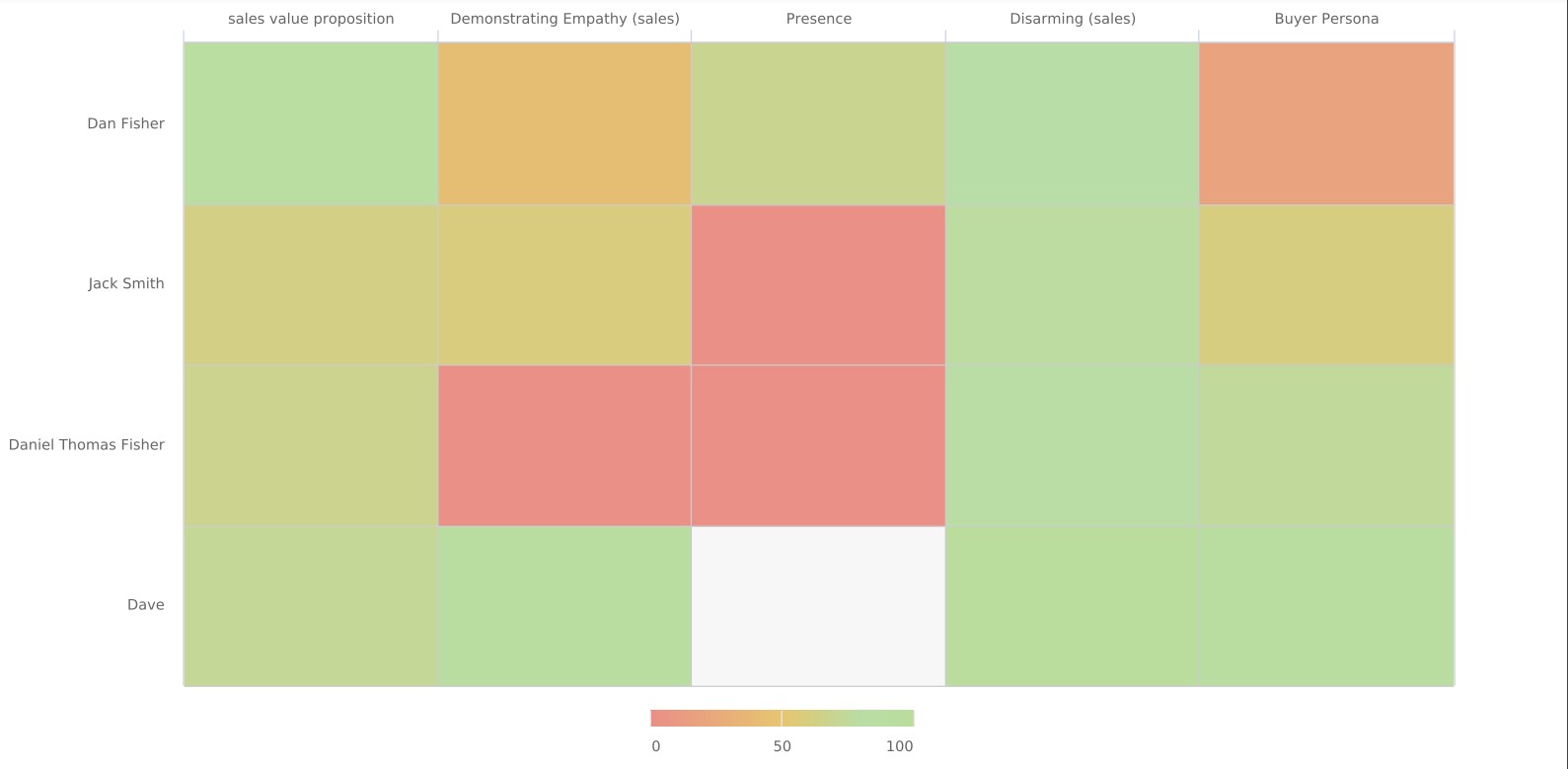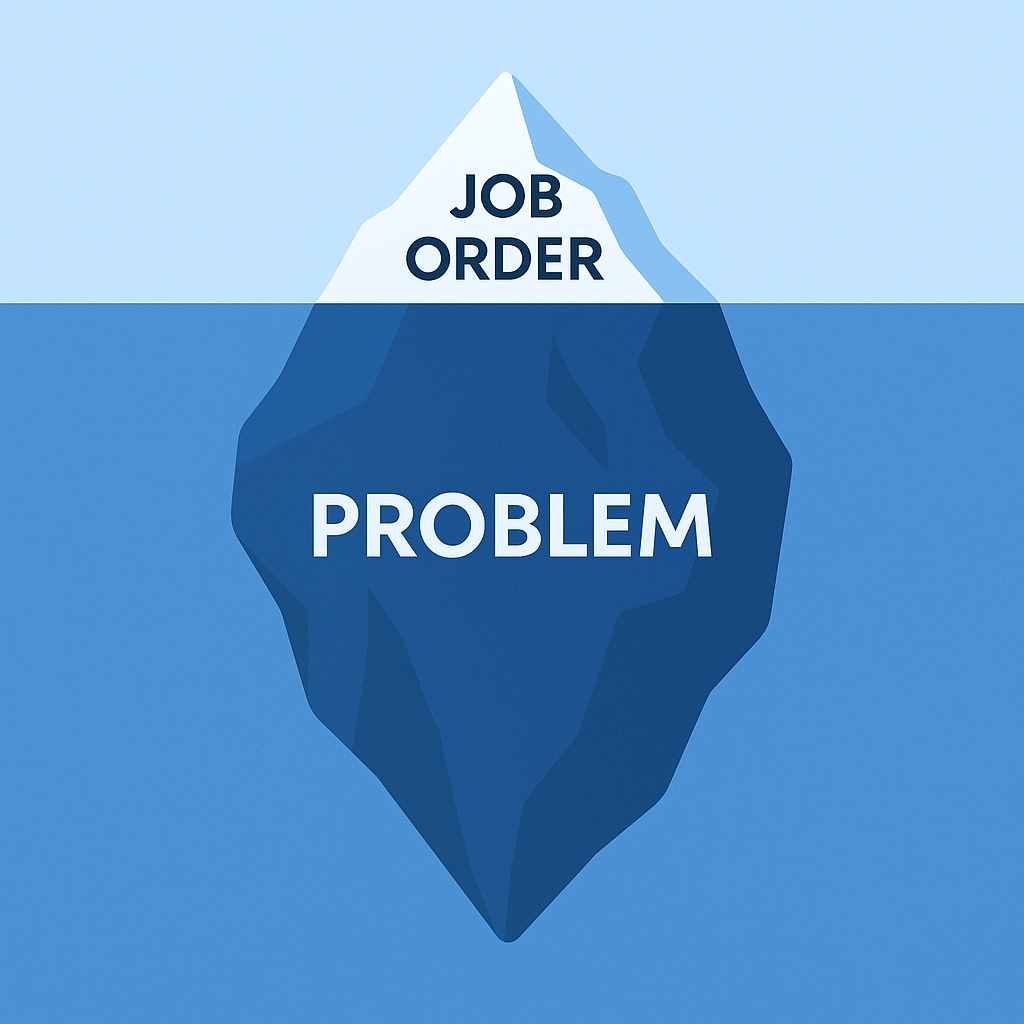Selling With Your Consultant
In my previous post, How to Prevent Unexpected Contract Terminations, I shared how systemizing consultant and client check-ins at key milestones...

Sales conversion ratios measure the effectiveness of your sales team at converting leads into new customers. It's an important metric to track for a variety of reasons. Some of which include:
Execution of Your Sales Process: By tracking sales conversion ratios at different stages of the sales funnel, you can assess how effective your sales team is progressing leads through each step. This helps identify bottlenecks and areas where the sales process might need optimization.
Identify Skill and Knowledge Gaps: Analyzing sales conversion ratios can reveal patterns indicating where the sales team may need additional sales training and sales coaching. If certain stages consistently show lower conversion rates, it could indicate skill gaps that need addressing.
Sales Coaching Roadmap: Sales conversion ratios offer a roadmap for sales managers to provide targeted sales coaching. If specific stages have lower conversion rates, managers can focus coaching efforts on improving the skills, and sales knowledge required to execute those stages.
Coaching High Performers: Conversion ratios point out where a rep can improve. Nobody achieves a 100% conversion ratio, let alone on every metric. Even your high-performing salespeople can convert a higher percentage of their prospects to customers. High performers can improve their sales win rates. High performers can improve their new prospect meetings to job orders conversion ratio.
The image below depicts the sales conversion ratios (and recruiter conversion ratios) that I like to track and measure. You need to track and measure these metrics because salespeople can’t convert a new lead into a customer without first successfully executing each of the preceding steps.

Here are the four steps I take for improving sales conversion ratios
Step 1 Identify Your Sales Conversion Ratios
I begin by identifying the conversion ratios that I need to track and measure including the sales activity (input) required to achieve the desired result (output).
Step 2 Define Your Competencies
Next, I identify and define the requisite competencies (skills and knowledge) that my reps must be enabled with in order to improve upon each conversion ratio.
For the purposes of this post, let’s assume I want to improve my sales reps phone conversations to meetings conversion ratio.
Below is a description of the skills and competencies sellers must be enabled with (IMO) to improve their phone conversations to meetings conversion ratio.
Skills
Disarming: This skill refers to the seller’s ability to relieve or even prevent the prospect from feeling anxiety, pressure or being defensive when receiving their unexpected phone call. Disarming puts prospects at ease and makes them feel comfortable speaking with salespeople. The prospect’s willingness to engage in a conversation is directly correlated to this skill.
Credibility: This refers to the seller’s ability to be believable and trusted. Salespeople accomplish this by sharing with the prospect what it is they know about them including their role and responsibilities, their company, industry and the challenges they face. See Buyer Persona below for more information.
Presence: The seller’s effectiveness in projecting confidence, credibility and conviction in their voice tonality, word choice and body language.
Questioning: The seller's ability to ask questions to uncover the prospect’s thoughts, feelings, and perceptions. The ability to know what questions to ask, when to ask them, and how to ask. Good questioning skills are key to the next skill….
Positioning (framing the conversation): The seller’s ability to present information in context that is relevant, logical and personalized to your prospect, making it compelling and persuasive.
Knowledge
Buyer Persona: A buyer persona is a fictional, generalized representation of your ideal customer. It’s not a real person but an imaginary avatar based on deep research that embodies the most important characteristics found in your ideal customer. As with a real, living and breathing customer, a buyer persona has demographic and psychographic characteristics, behavioral traits, desires and most importantly (for salespeople), pain points.
Salespeople must have a deep understanding of their ideal buyer personas, including their pain points, in order to demonstrate credibility and personalize their message. Buyer persona knowledge helps ensure salespeople stay focused on the right prospects and create the right messaging.
Value Proposition: A value proposition articulates how your service offering impacts your customers' business. From the customer’s perspective, a value proposition answers the question: How will my business change as a result of using your service?
Impactful value propositions, those that capture the attention of your ideal prospects, include metrics or statistics to quantify your value (the impact you made on your customer’s business).
As you can see, there is a lot that goes into improving this sales conversion ratio (and all sales conversion ratios for that matter).
There are four key sales skills and two major “bodies of knowledge” that sellers need to be enabled with to improve their phone conversions to meetings conversion ratio. And I’m sure we could make the case for adding additional skills and knowledge.
Step 3 Experiential Skill Certification
Now that I have identified and defined the specific competencies my reps need in order to improve their conversion ratio, I create experiential learning exercises. This is the fun part!
Experiential learning means learning by doing and reflecting on the experience. With experiential learning, learners are no longer just focused on the ‘how’ of their task or activity but also why they are doing it.
Experiential skill certification is verifiable proof that a rep can apply the skills and competencies within the context of a sales (customer) conversation. It is verifiable because we physically see and hear the rep apply the competencies.
For each sales conversion ratio my reps are trying to improve, I create multiple experiential skill certification exercises. Each exercise has multiple evaluation parameters. Each evaluation parameter ties back to the competencies required to improve the sales conversion ratio. In the screenshot below, you can see a few of the evaluation parameters, disarming, credibility and use of a relevant value proposition.
I video record my sales reps to certify they can execute the requisite skills and knowlege. In this case, in the context of a cold call. This is how I get verifiable proof my reps can execute. This is how I certify if a sales rep is “conversation ready.”
.png?width=1305&height=727&name=pasted%20image%200%20(1).png)
Notice the likert scale used to measure each competency. This is important because it quantifies how effective the learner is in applying the competency within the context of the exercise.
Following this process has enabled me to consistently improve sales conversion ratios.
Step 4, Correlating Field Results with Training Effectiveness
Here is how I correlate field results with training effectiveness.
Each week I review my sales team's sales metrics. For illustration purposes, an abbreviated sample sales report is depicted below.

Notice the cells highlighted in yellow. As you can see, this sales rep (Jack Smith) is struggling with his phone conversations to meetings conversion ratio. It's an abysmal 4%. As his manager and the sales training leader, which of the following should I do?
The obvious answer is the last option, but how?
Because I have defined the requisite skills and knowledge needed to convert phone conversations into new prospect sales meetings, I can go back and see how Jack performed in those relevant experiential skill certification exercises. As you can see in the report below (sorry I couldn't get this in high rez), there is significant room for Jack to improve upon the key skills and knowlege need to convert phone conversations into meetings.

Armed with this data I can now provide personalized coaching for Jack that focuses on addressing the specific skill and knowledge gaps. I can do 1:1 role plays with Jack. Additionally, I can re-enroll Jack in the same experiential learning exercises for additional practice, or I can create new (similar but slightly different) exercises for Jack to continue to practice executing these skills.
Over the coming weeks I can track Jack’s training performance and the degree to which he has improved and I correlate those results to his field results. I learn and iterate based on the data.
This is what it means to coach and develop talent, and it has been incredibly effective. By applying data, and a heavy dose of science, I have eliminated my old and very bad habit of “coaching off of gut instinct.” And I no longer have to make assumptions about what “I think” Jack may or may not be saying on his sales calls. Now I know because he has been skill certified and is conversation ready. I have verifiable proof.
What is your process for improving sales conversion ratios? Please share your thoughts and experiences in the comments section below.
To improve your sales coaching effectivness, download our eBook, How to Create a Culture of Accountability Through Coaching and Empowerment.

In my previous post, How to Prevent Unexpected Contract Terminations, I shared how systemizing consultant and client check-ins at key milestones...

About a year ago, I was serving as the fractional revenue leader, managing sales and recruiting for a client.

If you’ve worked in staffing long enough, you’ve been trained to chase job orders.